I Made it!!
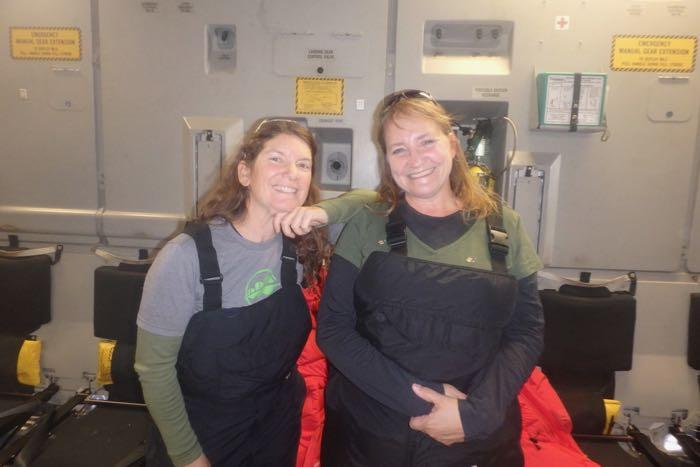 Denise Hardoy and Amy Osborne in the C-17 on final approach to McMurdo
Denise Hardoy and Amy Osborne in the C-17 on final approach to McMurdo
The plane eased down, bumped onto the runway, and powered up again. I know the pilot had said we were going to do a touch and go before we landed, but it felt like ...here we go again. Fortunately, we did circle around and come to a complete stop...IN ANTARCTICA! We finally made it!
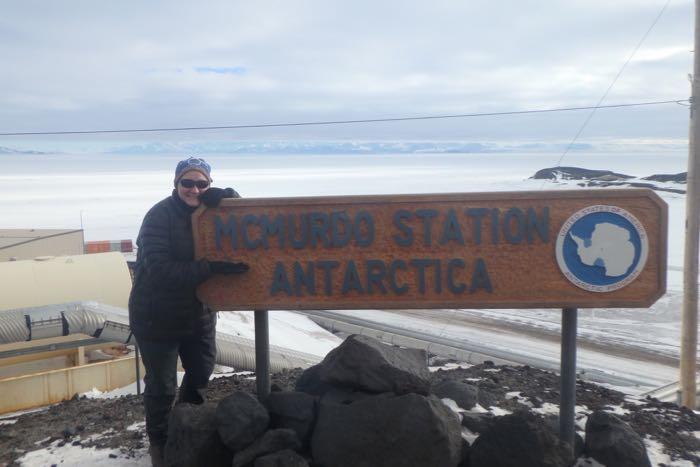 Denise Hardoy finally made it to McMurdo Station!
Denise Hardoy finally made it to McMurdo Station!
Everyone donned their Big Red parka, gloves, hats and neck warmers, then the door hatch opened. Even before going outside, you could see everyone's breaths. We climbed down the narrow stairs, and walked across the ice to waiting shuttles. The landscape took my breath away. It was just like in every picture I had seen, only more. More sky, more ice, more mountains. It actually wasn't really that cold, even though they had announced that it was -17 decrees. I guess its a dry cold... It felt like the top of the mountain at the highest ski resort- above the tree line. This barren landscape is like none anywhere else on Earth.
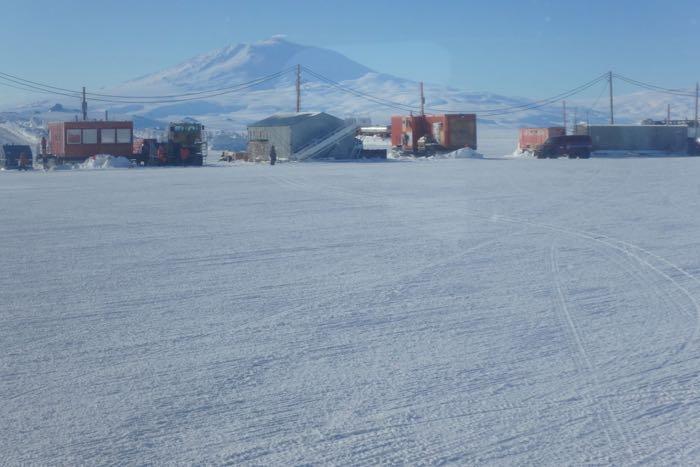 The view from the shuttle heading from the airfield to McMurdo
The view from the shuttle heading from the airfield to McMurdo
We climbed aboard the shuttles. They are really more like tractors pulling trailers full of people and gear. We trekked across the sea ice, then up the transition ramp to Ross Island. It was about a half hour of bumps and jostles - just like a dirt road at home. It was kind of difficult to see out the small windows, as they iced over quickly...on the inside! We past Scott base- home of the Kiwi's. It's the New Zealand base. Then we continued up the hill to McMurdo Station.
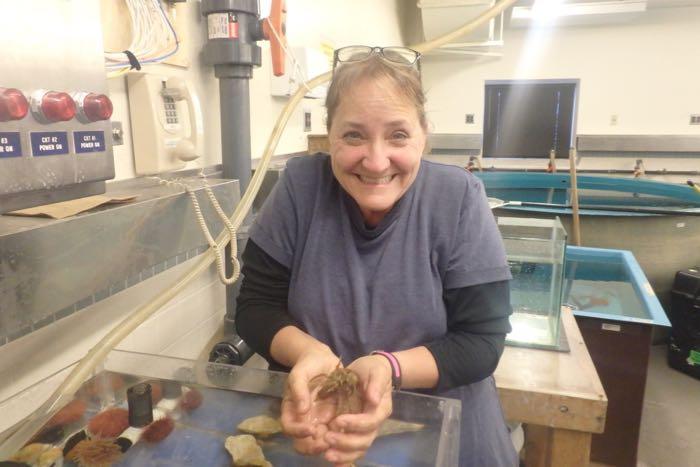 Denise Hardoy holding an isopod from the touch tank in the Crary Lab
Denise Hardoy holding an isopod from the touch tank in the Crary Lab
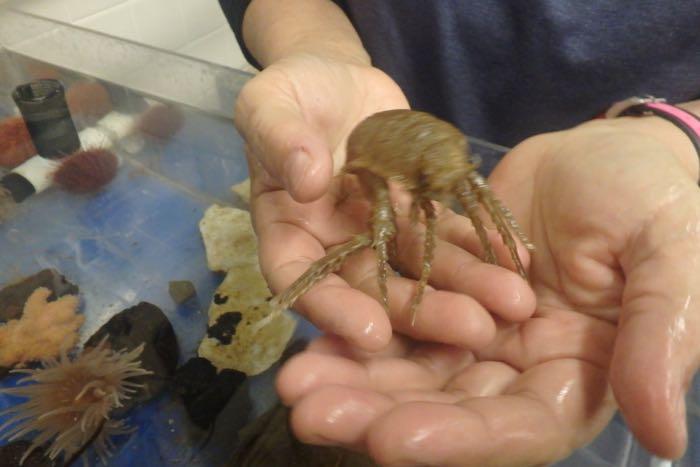 Holding a giant Isopod that is the size of my hand!
Holding a giant Isopod that is the size of my hand!
We arrived at Building 155. This big blue building will be my home for the next five weeks. It houses the dining hall, and , fortunately, my dorm room. I was met at the entrance by most of my research team. Their familiar faces were a welcome site. Dr. Todgham helped me stow my bags and took us on a tour of the station. It is amazing the infrastructure that is set up down here. It take a lot of work from many different areas to keep this place working, from desalinization, to powerhouses, and waste water management to a firehouse, bakers and heavy equipment operators. Scientists(and that includes me!) actually only make up less than ten percent of the people here.
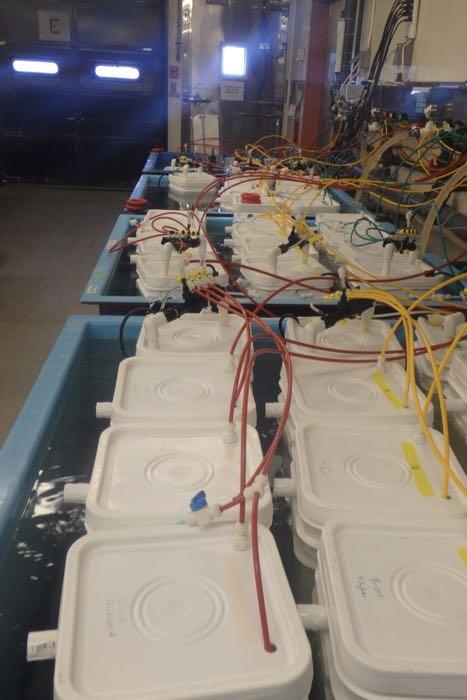 The carbon dioxide set up for checking fish response to more acidity in the water.
The carbon dioxide set up for checking fish response to more acidity in the water.
We even got a quick tour of the lab/aquarium. The set up is intricate, and very confusing at this point. They have collected quite a few fish of a variety of species. The biggest ones look like they are about ten inches or so long. They have even had some eggs hatch. The tiny little fry look like they are mostly eyes with tiny tails at this point.
Dinner
Next, it was on to my first meal here. It looks like the food is going to be excellent. There is always a main course, but you also have options. They have lots of staples that are always offered- like pizza. Every day, there is even an extensive dessert menu. For my first dinner, I had chicken, with vegetables and potstickers. It was yummy.
Sunday Science
Because we arrived on a Sunday, we were lucky enough to attend our first science lecture. And, I do mean lucky. It was presented by Dr. Heather Liwanag , the PI(Primary Investigator) for the B-030 Weddell Seal team. She is a professor at Cal Poly in San Luis Obispo. Her team is looking a the physiology of the Weddell seal pups. She is comparing how they keep warm and dive, compared to other types of seals. The scientists do these presentations so that all the people working on the station get to know the science behind why we are all here. It was amazing to here the really detailed questions coming from the audience made up mostly of support personell. It doesn't matter what your occupation is down here, everyone cares about the science.
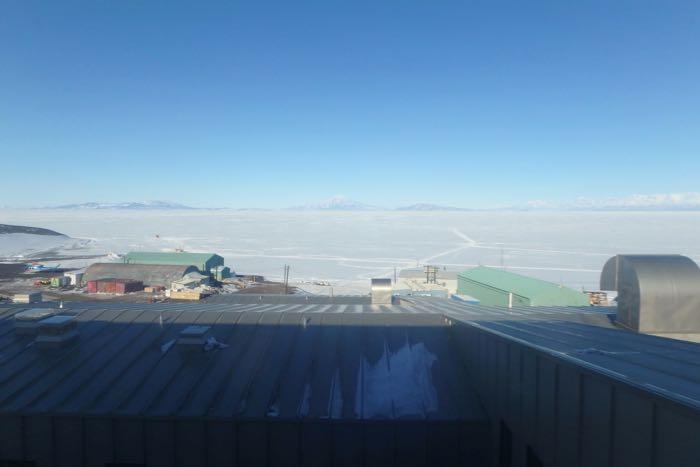 The view of Discovery Mountain from the Crary Lab Library.
The view of Discovery Mountain from the Crary Lab Library.
Training
So before I am allowed to do anything besides walk around the station, I need to undergo a series of trainings. This afternoon starts with the Antarctic Field Safety Course. I will learn Antarctic survival skills, personal well-being, and risk-management theory. I think this is the basic,"How not to Die in Antarctica," training. Tomorrow and the next day, I will have Sea Ice Training and GPS training. Then I will get certified to drive the piston Bullies- the big tractor transporter machines, and snowmobiles. Yes, I get to drive a snowmobile! I can't wait for tomorrow!!
Stay Cool,


Comments
Add new comment